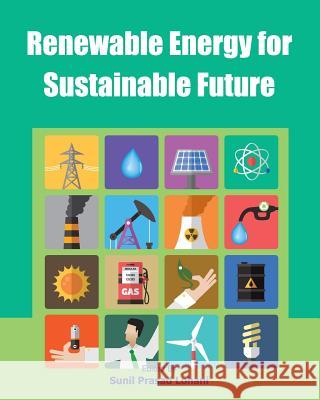Renewable Energy for Sustainable Future » książka
Renewable Energy for Sustainable Future
ISBN-13: 9781477554890 / Angielski / Miękka / 2013 / 120 str.
The modern era of human civilization has been confronted by increasing energy demand and global warming phenomenon, the biggest challenges to humans, which is resulting into climate change. The world today is focusing its attention to promoting renewable energy mixture along with energy efficiency program to mitigate greenhouse gases as well as to ensure sustainable future of the world. The basic activities of a modern society, including production of goods and service, and transportation should have near zero carbon emissions or have minimum value to cease or at least slow down the global warming phenomenon. Since the industrial revolution, humans have extensively exploited the resources of the nature which resulted in upsetting of the delicate balance of the global environment. It has been predicted by several studies that if the global warming phenomenon is not confined within a limit, the results would be catastrophic. To ensure sustainable future that is to meet needs of the present without comprising the ability of future generations to meet their own demand, scaling up uses of sustainable energy sources which includes all renewable energy sources as well as energy efficiency measures are to be implemented without any delay. Renewable Energy for Sustainable Future is suitable for advanced undergraduate students and postgraduate students. It takes a practical approach rather than a conceptual approach. It offers a truly reader-friendly way to get to the subject, making it the ideal resources for those who are new to it and providing a definitive guide in this vibrant and evolving discipline. This book is an invaluable companion for students from their first encounter with the subject to more advanced studies, while the high quality artworks are designed to present the key concepts with simplicity, clarity and consistency. There are totally 5 chapters in this book. In chapter 1, the power generated by a pumping kite wind generator is estimated by analyzing crosswind speed and forces of the kite. Airspeed of the kite, tether tension, optimal tether unwinding speed, and mechanical power are derived for different conditions and system parameters. In Chapter 2, the Agave salmiana plant is studied as an alternative source of fuel. The process presented has positive impacts, due to the zero net emissions of CO2 into the environment, and because it helps to minimize the contaminants (ash) near factories. Chapter 3 provides a comprehensive overview of biochar and bio-oil characterization with acknowledged standard test methods and can be used to get ideas about the properties of biochar and bio-oil obtained from biomass pyrolysis/carbonization. Chapter 4 describes a model to evaluate and improve the governmental policy of subsidizing the investment in PV panels from the viewpoint of the average Flemish household using the payback period and the return as performance measures. Chapter 5 analyzes the problem of low RETS penetration in the electricity mix of developing countries, with the main objective of identifying the roots of this problem and outlining some possible strategies to solve it.











